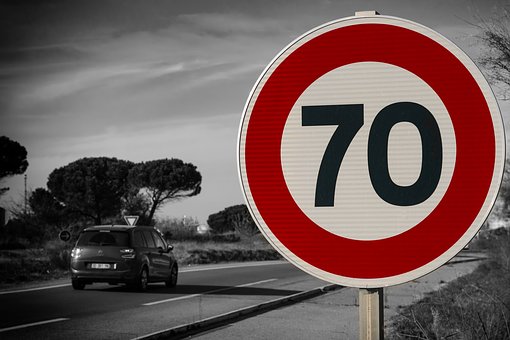WE’RE ALL GUILTY OF IT at some stage or another. Sometimes we intentionally exceed the posted speed limit (especially when it seems stupidly low) and other times we look down at the speedo and realise we’re travelling above the limit, without even intending to.
A road safety organisation in the UK has sounded a timely reminder to stay within speed limits on every journey. This, it says, is not only a key part of reducing collisions and casualties on our roads, but it’s also an effective way of reducing your environmental footprint as a driver.
A spokesperson at GEM Motoring Assist said: “One of the most important things we can all do when at the wheel is to drive within the speed limit at all times on journeys. It’s a vital part of taking personal responsibility for our own safety – and that of others – when we are driving.”
“Research categorically shows that reduced speeds mean fewer collisions, and reduced severity of collisions. For example, an overall 2km/h reduction in speed results in an average five percent reduction in collisions.”
In the UK, motorway speed limits are usually a little higher than ours – typically 70mph (130km/h) and most drivers seem to happily sit on 80mph (130km/h). In my experience, UK police tend to take a sensible approach to people exceeding the limit by up to 10 mph (16km/h) where and when it is safe to do so. However, a car speeding at 130km/h uses 10 percent more fuel than one driven at 110km/h. And a car driven at 110km/h uses 15 percent more fuel than one at 80/km/h”
Driving within speed limits is a key part of making our roads safer. But it’s not enough on its own. We need to ensure that we’re alert, observant and courteous at all times, that we use well-maintained cars and that we always keep a safe distance from the vehicle in front.
This can make all the difference in the event of a sudden incident or hazard, not only for us as drivers but also for those who share the roads with us.
It’s worth remembering the connection between environmentally-aware driving and defensive driving, which has long been established. Smooth, progressive and systematic driving is safer. There are few surprises and no last-minute manoeuvres. You’re doing your bit for the environment, you’re keeping your licence clean, you’re hopefully saving money and also reducing the risks you face on the road.
Top tips for slowing down
- Don’t rush on a journey. Leave earlier and ensure you have plenty of time, with no reason to speed.
- Keep a close eye out for speed limit signs and watch for clues that the speed limit may soon be about to change.
- Scan the speedometer frequently so you always know your own speed.
- Always ask yourself: is my speed both legal and safe? After all, the speed limit is just that – a limit, not a target, and there will be circumstances when you will feel much safer driving below the limit.
